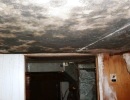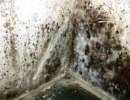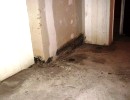Occupational Hygiene
We provide site assessments and recommendations for corrective actions based upon the reports attained through sampling or monitoring of the area in question. During assessment the samples collected are always analyzed through accredited laboratories to confirm the accuracy and reliability of the results. We provide detailed reports on the assessments and surveys conducted at the site which includes the sample data collected, construal of this data, conclusions, required compliance by the government’s regulatory authorities, scope of remediation and conformance inspections for quality control.
What is mould?
Moulds are fungi, a group of very common organisms that also includes mushrooms and yeasts. Moulds are generally found in nature and are carried indoors from the outside. More than 270 species of mould have been identified in Canadian homes.
Moulds can grow indoors in wet or damp areas, including wallpaper, ceiling tiles, carpets (especially those with jute backing), insulation material, wood and drywall.
What are the health effects of mould?
Most common types of moulds are generally not harmful to healthy individuals. However, exposure to mould can cause reactions depending on overall health, age and the amount of time an exposed person spends in the home.
The elderly, pregnant women, infants and young children, people with allergies, chronic respiratory illness and/or chemical sensitivities and those with weakened immune systems are most likely to experience health effects from mould.
The most common health problems associated with exposure to mould are:
- Eye, nose and throat irritation
- Runny nose, sinus congestion, frequent cold symptoms
- Increased asthma attacks
- Allergic reactions




